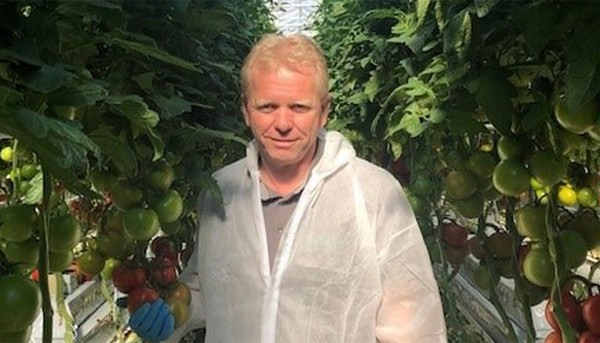Poul Erik Lund is an international Crop Advisor and co-owner of Grotek Consulting, a Danish crop consultancy company for greenhouse vegetable growers in the North of Europe. As an international Crop Advisor with 30 years of experience, he wants to stay up to date on the latest innovations and developments in the greenhouse industry. “Both growers and advisors should be ready for new technologies for crop and technical management”, so he says. Poul Erik has known Jan Hanemaaijer, Crop Advisor at Blue Radix, for many years. In this interview, Jan with Blue Radix asks Poul Erik what he thinks of the development of autonomous growing in general, and how it effects his work as an international Crop Advisor.
Autonomous growing
“When you read about it, often people talk about data-driven growing, but it’s not the same. We have had a lot of data in greenhouses for many years. Maybe we do not always use it well enough. Autonomous growing is much more than data driven growing. It’s a new way of using the data we already have. It’s too much for a grower to work with all the data all the time. After 30 years of crop experience, I know how complex it can be. Nowadays, algorithms can do this work for them. With autonomous growing we are getting closer to the crop. Instead of yearly, weekly or daily planning, you can go for a planning from hour to hour or even faster. We don’t want to look back on failures of yesterday, we need to learn from mistakes, not to make them again. Autonomous growing supports that.”

Working with alghorithms
“In general greenhouses are getting bigger and there are less experienced growers in the near future. And as a crop advisor I cannot be everywhere all the time. The algorithms are a guideline to support growers, so I can always be on top of the situation, no matter where I am. My visits to the customer can then be even more effective. Algorithms support growers in their daily decisions. As advisor I can focus on the crop strategy of the grower instead of adjusting the setpoints in the climate computer. As a grower or an advisor, you need to have the strategy clear. This depends of course on the type of crop and which variety is grown. When the right strategy is in place, the algorithms help you reach the targets autonomously in terms of desired production and quality.”
Looking ahead
“Autonomous growing is not for small scale growers yet. It’s mainly for bigger growers with more compartments or for new projects or investors who want to have a guaranteed production. They use it to help to manage the crop in bigger areas or multiple locations. What still can be developed is including all kinds of plant measurements or sensor data.
It is not always an even situation in the greenhouse for all plants, we try to make it even, but temperatures can vary and so can crop-work, and the pressure from pests and diseases. This needs to be taken into consideration. How can the algorithms handle this?”
A good start is half the work
“To get experience in autonomous growing, you just have to start. Of course, it’s important that growers trust the algorithms and the system. For growing trust, they need to learn and to get aware of what the system can do or cannot do for them. The more the grower trusts the outcome of the advice or recommendations of the models the more they can let go of setting their own setpoints.
Grower and advisor should give priorities how to control the settings. For example, how to reach a certain fruit quality or production target with the right fruit size. How to keep balance in fruit load and RTR. I hope that companies like Blue Radix can help us to make these decisions faster. Besides, integrating the use of sensors which can give more insights in plant status and use of smart camera’s which can make predictions on yield and plant development. The art of growing is all about details. We need to make better decisions to get better results. Algorithms can help us with that. We have so much available data now and even more in the future, only algorithms can handle this.”
For more information: 
Blue Radix
info@blue-radix.com
www.blue-radix.com
